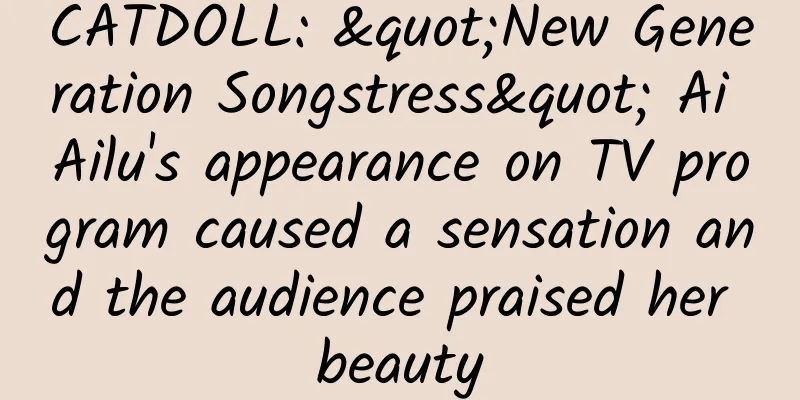CATDOLL: BAT is scrambling to grab 219 million ACG users. Who will the post-90s generation pay for?

|
2015 can be described as the naked "first year of ACG capital". Industry leaders invested heavily in positioning themselves, frequently launched "big moves", and capital surged like an undercurrent. How did they make their plans? What was the purpose behind it? And who will win in the end? Three leaders and two keywords will reveal the general trend of ACG economy in 2016. The capital war between three giants is in full swing. Let's see how BAT plans to develop the second dimension In the second half of 2015, the market entered a capital winter, but the financing of the two-dimensional industry was hot. According to iResearch statistics, the financing amount of the two-dimensional industry reached 162 million in 2014, and it surged to more than 546 million in 2015. This is just the beginning. In August 2015, Aofei acquired Youyaoqi for 900 million yuan, becoming the largest merger and acquisition case in the Chinese animation industry. The war of two-dimensional capital has already begun. BAT, as the Internet giants, also officially entered the battle in 2015. However, due to their different positioning and capital layout, their strategies in the field of the two-dimensional economy are also different. Taking the most critical core content of the two-dimensional economy, that is, "anime videos", as an example, the "three pillars" of BAT are as follows: Platform/traffic entrance Investment Content layout (not for young children) Tencent Video Bilibili Mainly Chinese comics, supplemented by Japanese comics Youku Tudou Acfun mainly Japanese comics, supplemented by Chinese comics iQIYI / Japanese anime as the main focus, Chinese anime as the supplement Tencent - Monopolizing users + producing original Chinese comics IP According to the "2015 China 2D User Report" released by iResearch, the number of 2D users reached 219 million in 2015, which is divided into 60 million "core 2D" animation culture users and 159 million "pan 2D" animation entertainment users. Compared with Alibaba, which started out as an e-commerce company, and Baidu, which started out as a search engine, Tencent, which started out as an interactive and entertaining company such as QQ and games, is naturally endowed with a "pan-two-dimensional" user gene. The user characteristics of its Tencent Video also show obvious "pan-two-dimensional" characteristics. A typical manifestation of this is that the "youth Chinese comics" that are more down-to-earth in entertainment have become high-traffic pillar videos, while the most popular two-dimensional platform in China, Bilibili (hereinafter referred to as B station, whose public valuation has exceeded 1.7 billion yuan), represents the "core two-dimensional" users who have traditional viewing habits for Japanese comics. Since 2015, B station, which has received huge financing, has begun to "whitewash" and introduced a large number of genuine Japanese comics including "Naruto". Tencent's investment in B station has completed the comprehensive coverage and monopoly of "pan-two-dimensional + core two-dimensional" users. From the perspective of "Big Tencent", the full industrial chain development of original top IPs has always been a powerful weapon. The animation IP of Tencent Video, the literary IP of China Literature Group, the comics IP of Tencent Comics, the game IP of Tencent Games, and the film and television IP of Penguin Pictures and Tencent Pictures, the five major IPs constitute the Tencent IP matrix and are interconnected. In November 2015, Tencent Video announced the launch of an animation venture capital business called "Youth National Comics Theater". In 2016, it directly participated in 14 animation venture capital projects, including investing in several top IPs such as "Battle Through the Heavens" and "The King's Avatar" with China Literature Group, and the industry chain development involves animation, games, film and television, literature and other fields. It is coming with great momentum, packaging content, market and commercialization, and directly aiming at the position of the first "two-dimensional platform" in the entire network. Alibaba - Deeply cultivating PGC+ and introducing Japanese comic IP Compared with Tencent's cautious investment and acquisition, Alibaba's characteristic of "rich and powerful, willing to take advantage of opportunities" was demonstrated again in October 2015, when it acquired Youku Tudou for RMB 35.6 billion. Two months ago, Youku Tudou also invested RMB 300 million in Acfun (hereinafter referred to as A Station), an old rival of Bilibili. Unlike Tencent's breakthrough of barriers and focus on Chinese comics, Youku Tudou is obsessed with investing heavily in introducing top Japanese comics IPs such as "Naruto" and "Gintama", and at the same time uses Youku's UGC and PGC characteristics to attempt to complete an internal "pan-two-dimensional + core two-dimensional" layout. Baidu - Copyright coverage + traffic is king iQiyi, a subsidiary of Baidu, can be said to be the earliest video site to enter the animation industry. Its investment in domestic children's animation and new Japanese animation has accumulated a huge library of films. For example, it spent more than 200 million yuan to purchase the top Japanese animation IP "One Piece". In 2014, as the PGC content of video giants began to rise, iQiyi also took the opportunity to launch an animation venture capital center. However, so far, it has only produced sporadic venture capital works such as "Spirit Realm". A large number of copyright purchases covering the film library + tentative production of animation IP constitute iQiyi's layout for the second dimension. Tencent, Alibaba, and Baidu have each completed their own ACG layout in 2015. Why are BAT still scrambling for the ACG market in the capital winter? What is their purpose? The following two keywords will tell you why. And who will win? Keyword 1: Grasp the key group - post-90s users Whoever wins the second dimension wins the young people. Whoever wins the young people wins the future. Why do they want to compete for ACG users? In fact, in the final analysis, what BAT wants to compete for is a new user group that represents the trend of the Internet - the post-90s youth user group. Let us use some data to briefly describe the appeal of ACG users. 1) A large number of teenage users, with 2 out of every 3 young people being 2D users. As an authoritative television media, CCTV also expressed its high attention to the two-dimensional culture in the program "Morning News". CCTV News quoted iResearch data as saying: At present, the number of pan-two-dimensional users in my country has reached 219 million, of which more than 95% are born in the 1990s and 2000s. iResearch analysis found that the ratio of male to female two-dimensional users is 6:4; they are entrenched in the eastern coastal areas and have strong purchasing power; 81% are student users; based on the increasingly prominent IPization of animation, the number of two-dimensional users has been growing steadily, and on average two out of every three young people are two-dimensional users. The huge audience group has become the strongest guarantee for the ACG economy. Data released by iResearch also shows that 50% of ACG users aged 25-30 spend 2,000 yuan a year on ACG. With the emergence of a large number of anime fans and the rapid growth of two-dimensional consumer users, as well as a series of policy support, China's total animation output value has shown a steady upward trend and is bound to achieve a blowout in 2016. 2) The once-ignored blue ocean users, the overlap between animation users and film, television and variety show users is low. According to Tencent DMP data, among the audiences of the four key industries, namely maternal and infant industry, food and beverage industry, daily chemical industry, and consumer electronics industry, the proportion of those born after 1990 generally reaches more than 40%. They are all target groups with a preference for anime, and the overlap between them and users of movies, TV series and variety shows is relatively low. Those born after 1990 have become a user group that brands must pay attention to. Keyword 2: Grasp the key strategy - identify the hot IP As mentioned in the previous article about BAT's two-dimensional layout, the common strategy of Tencent and Alibaba is to "use the pan-two-dimensional + core two-dimensional platform to develop IP." How to identify IP, select IP, cultivate IP, and how to produce "explosive IP" in the first place have become the decisive factors in determining the success or failure. First, IP autonomy. Second, high-quality IP must have sufficient autonomy to have a flexible and broad commercial direction. For example, although the ace Japanese comic IP "One Piece" has better clicks than the Chinese comic "Ten Thousand Bad Jokes", due to the long-term high cost of communication with the Japanese side, "One Piece" has low autonomy. All commercial rights such as games, peripherals, and advertising placements can only be negotiated one by one with different interfaces, which often means nothing. The grounded original IP "One Hundred Thousand Bad Jokes" is an original project. Although it is relatively lightweight, its flexibility and breadth are far better than imported IP. In this sense, original IP is better than imported IP. Second, if you want to create a high-quality IP, you must first start with the content. Judging from the domestic situation, the most popular form of entertainment - Internet literature + large investors is a more ideal cooperation model. Third, it is the change of business model. On the one hand, based on the ability of users to generate UGC secondary creation, UGC can be involved in the PGC process of IP creators, so as to provide market feedback and accumulate fans in advance, change the traditional production and broadcasting model, and improve the survival rate and market acceptance of IP. On the other hand, the two-dimensional IP can bring more to advertisers and licensees, including new ways of advertising placement, advertising endorsements that connect the entire industry chain, new choices for game manufacturers that have already entered the red ocean, and new ways for traditional manufacturers to obtain licensed images. These are all opportunities that the "2016 Two-Dimensional Economy" will face. Conclusion: With a user base of 219 million and growing day by day, and with increasing spending power, China's ACG economy has taken an unstoppable step. Capital giants led by BAT have entered the ACG field, making this economic war full of smoke. Through the completed "pan-2D + core 2D" platform layout, BAT Capital will leverage the huge blue ocean of post-90s users by cultivating original "explosive" IPs and form the core user competitiveness of the next generation of the Internet. Tencent is ahead, Alibaba is trying to catch up, and Baidu is still hesitating. Who will have the last laugh? The future belongs to the ACG world. It can be asserted that the ACG economy in China has entered a blowout period in 2016. Who can become the real winner in this battle will become the most eye-catching part of the Internet economy in 2016. |
<<: CATDOLL: "Bleach" Episode 664 "THE GIFT"
Recommend
CATDOLL: July's "Holy Angel" Episode 5 Preview Picture Sweet Witch Voluntarily Dedicates Herself
The preview image of the fifth episode of the new...
CATDOLL: The copyright of the Q-version illustrations of the second season of "Bungo Stray Dogs" is announced
The TV animation "Bungo Stray Dogs" ada...
CATDOLL: Diamond Ace Season 2 reveals character design and voice actor of Mukai Yota
The second season of the anime "Ace of Diamo...
CATDOLL: "Magic Circle Guru Guru" will have a new TV animation, a childhood classic will return
"Magic Guru Guru" is a comic book about...
CATDOLL: Dragon Ball Super manga chapter 15 reveals the God of Destruction's greatest weakness
The Chinese version of Dragon Ball Super manga ep...
CATDOLL: Top 10 "Detective Conan" Popularity Voting: Little girls are the best
Detective Conan has been serialized for 21 years,...
CATDOLL: Japanese magazine says "Would you like a rabbit today?" Not only is the work disgusting, the author is also disgusting
In recent times, there have been a number of murd...
CATDOLL: New Weekly BD Sales Released, "Charlotte" Volume 1 Sold 7,000, a Counterattack
The October series is about to be aired, and the ...
CATDOLL: "Sword Art Online: Ordinal Scale" latest PV all the confidantes appear
The third promotional PV of the animated film &qu...
CATDOLL: The daily life of a foreign cute girl. The latest comic "Golden Puzzle" is on sale today
The comic book "Golden Jigsaw Puzzle" t...
CATDOLL: American media says people who use anime characters as avatars discriminate against women
Nowadays, online social networking is very popula...
CATDOLL: "Your Name." regains the top spot in Japan's box office and has received great response overseas
Last week, the animated film "Your Name.&quo...
CATDOLL: Daisuke Ono and Yuu Irino to star in "Osomatsu-kun" - a luxurious voice actor lineup is concluded
To commemorate the 80th birthday of Fujio Akatsuk...
CATDOLL: The main character designs of the new anime "BanG Dream!" in January 2017 have been released
The animation "BanG Dream!" adapted fro...
CATDOLL: In the latest chapter of the "Detective Conan" comic, Kidd appears again to support the show?
According to the latest preview, Kid will appear ...









